Dealing With Separation Anxiety in Toddlers: Effective Strategies
When it comes to handling separation anxiety in toddlers, it's crucial to approach the situation with patience and understanding. By implementing strategies like establishing consistent routines, building trust through predictability, and encouraging independence gradually, you can help your little one navigate their emotions in a healthy way. But what about those moments when separation is inevitable, and your toddler struggles to cope? Stay tuned to discover effective techniques that can make these transitions smoother and help your child feel more secure during separations.
Key Takeaways
- Gradually practice short separations with trusted caregivers.
- Maintain a positive and reassuring attitude during separations.
- Provide emotional support through listening and empathy.
- Stay patient, calm, and consistent in responses.
- Establish consistent routines to reduce anxiety and build trust.
Understanding Separation Anxiety
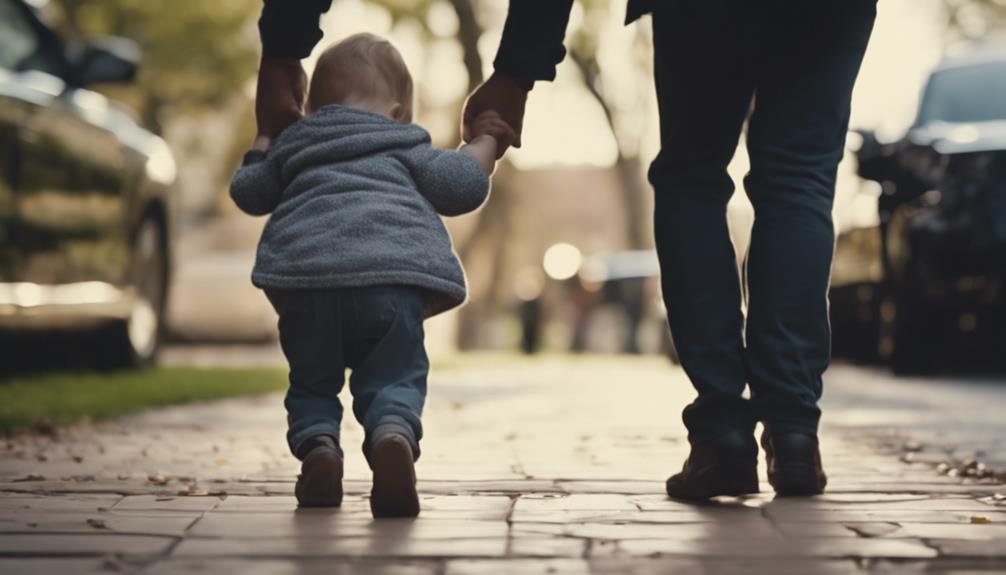
Understanding separation anxiety in toddlers can help parents navigate this common developmental phase with patience and support. It's essential to recognize that separation anxiety is a normal part of your child's emotional growth. Toddlers, typically between the ages of 8 months and 3 years, may exhibit distress when separated from their primary caregivers. This behavior stems from their growing awareness of individuality and attachment to familiar faces.
As a parent, it's crucial to acknowledge your child's feelings and provide reassurance during these moments of distress.
During episodes of separation anxiety, your toddler may cry, cling to you, or resist being comforted by others. Remember, this behavior is a sign of a healthy attachment to you. By acknowledging their emotions and responding with patience and understanding, you can help them feel secure and develop trust in themselves and others. Establishing predictable routines, offering comfort objects, and gradually exposing your child to brief separations can also aid in managing separation anxiety. Remember, this phase is temporary and a natural part of your child's emotional development.
Establishing a Consistent Routine
Navigating through your toddler's separation anxiety can be made easier by establishing a consistent routine that provides a sense of security and predictability for your little one. Toddlers thrive on routine as it helps them know what to expect throughout the day, reducing uncertainty and anxiety. Start by setting regular times for meals, naps, playtime, and bedtime. Consistency in these daily activities can create a comforting environment for your child.
Incorporate small rituals into your routine, such as reading a bedtime story or singing a soothing song before naptime. These rituals can signal to your toddler that it's time for a transition, helping them feel more prepared and secure. Additionally, involve your child in the routine by letting them choose their pajamas or a favorite toy for bedtime. This involvement can give them a sense of control and independence, easing their anxiety.
Building Trust Through Predictability
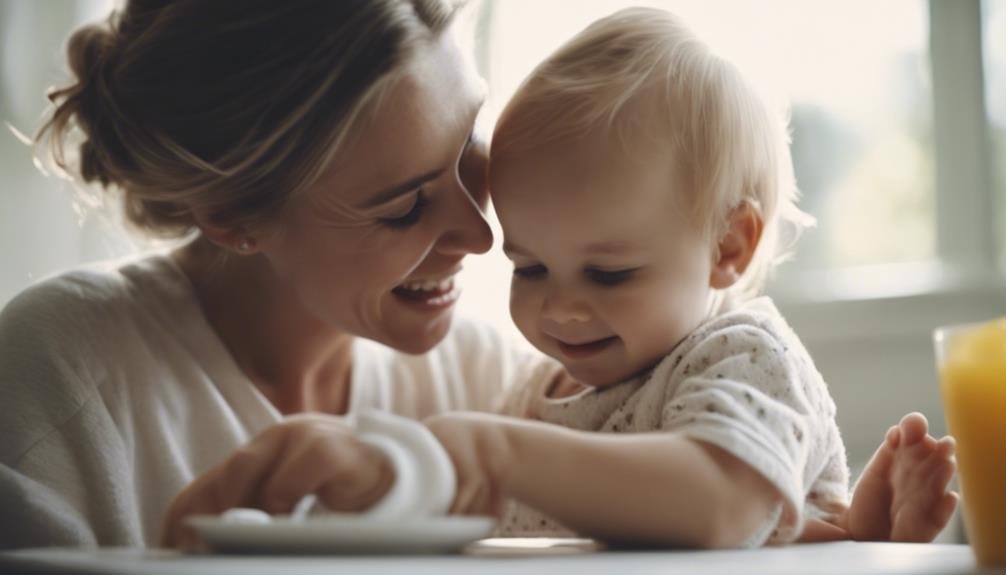
To foster a sense of security and trust in your toddler, establish a reliable routine that offers predictability and stability in their daily activities. Toddlers thrive on knowing what to expect, and having a consistent schedule can help them feel secure and build trust in their environment. By creating a predictable routine, you are providing a sense of safety and assurance for your little one. Here is a table to illustrate the benefits of building trust through predictability:
| Benefits of Predictability | Description |
|---|---|
| Reduces Anxiety | Knowing what comes next can help alleviate stress and anxiety in toddlers. |
| Encourages Independence | Predictability allows toddlers to feel more confident and capable in navigating their day. |
| Enhances Bonding | By establishing routines, you create opportunities for quality time and connection with your child. |
Encouraging Independence Gradually
Gradually encouraging independence in toddlers can be achieved through small, achievable steps that empower them to explore and learn at their own pace. By providing opportunities for your toddler to make choices within a safe environment, you can help foster their sense of autonomy. Simple tasks like picking out their clothes or deciding which book to read can give them a sense of control and build confidence in their abilities.
Encouraging independence also involves allowing your toddler to try new activities with your guidance. Whether it's learning to feed themselves or attempting a new puzzle, offering support while they explore helps them develop new skills and grow more self-reliant. Celebrate their efforts and successes, no matter how small, to reinforce their sense of accomplishment.
Practicing Short Separations
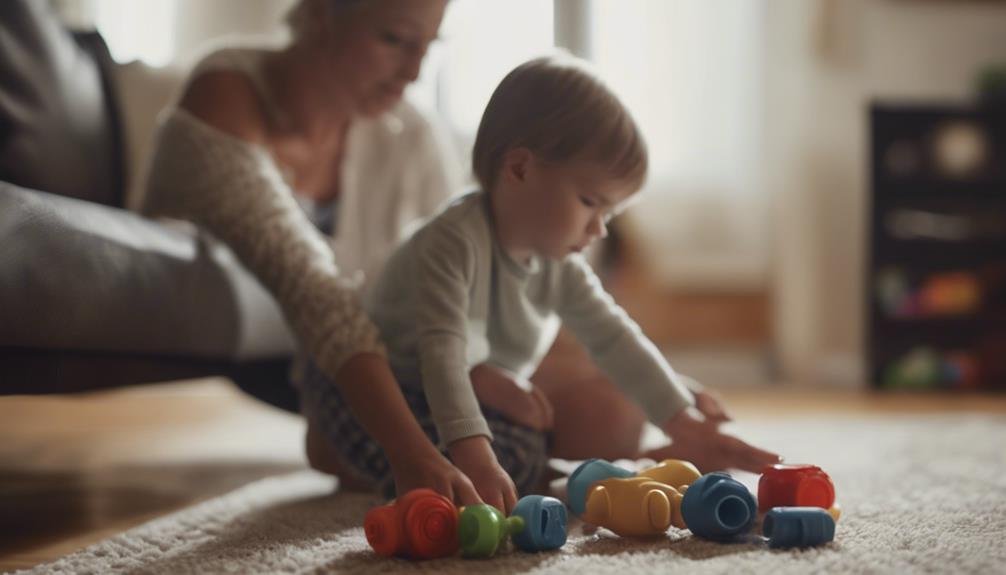
When helping your toddler deal with separation anxiety, consider practicing short separations to gradually build their comfort with being apart from you. Start by leaving your child with a trusted caregiver for short periods, gradually increasing the time as they become more at ease with the separation. This practice can help your toddler understand that separations are temporary and that you'll always come back for them.
During these short separations, make sure to maintain a positive and reassuring attitude. Offer comfort before leaving, but avoid lingering too long as this can increase your child's anxiety. Keep goodbyes brief and confident, letting your toddler know when you'll return. Engaging in a consistent routine can also help your child feel more secure during separations.
Using Positive Goodbyes
Wondering how you can make goodbyes more positive for your toddler when dealing with separation anxiety? Positive goodbyes can help ease the transition and reduce your child's anxiety. One effective strategy is to create a consistent goodbye routine that provides comfort and reassurance. By establishing a ritual, such as a special wave or saying "I love you" before leaving, you are giving your toddler a sense of security. Additionally, offering a small token of comfort, like a favorite stuffed animal or a family photo, can help your child feel connected to you in your absence.
| Goodbye Ritual | Description | Emotional Impact |
|---|---|---|
| Special Wave | Wave goodbye with a unique gesture | Creates a sense of connection and routine |
| Saying "I love you" | Express love and reassurance before leaving | Provides emotional comfort and security |
| Giving a token | Offer a comforting object like a stuffed animal | Provides a sense of familiarity and closeness |
Creating a Comforting Transition Object
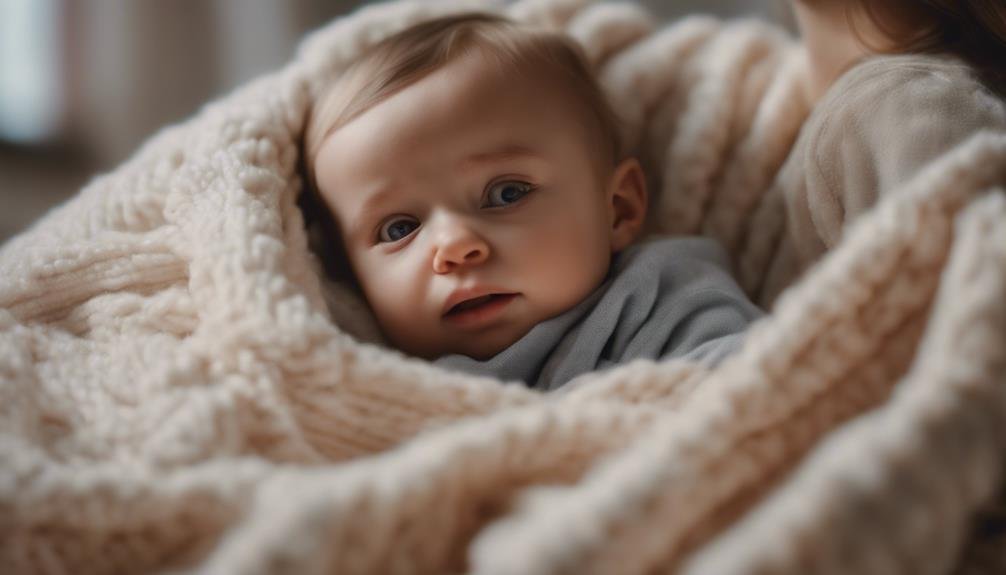
To help your toddler feel more secure during separations, consider creating a comforting object that can provide them with a sense of familiarity and closeness. This object, often referred to as a transition object, can serve as a source of comfort and reassurance for your little one when you're not around.
Here are three ways a comforting transition object can benefit your toddler:
- Sense of Security: Having a familiar object like a soft toy or blanket can help your toddler feel more secure and less anxious during separations.
- Emotional Support: The transition object can become a trusted companion that offers emotional support and a sense of connection in your absence.
- Promotes Independence: Encouraging your toddler to bond with a comforting object can also foster independence and self-soothing skills, empowering them to manage their emotions better.
Introducing a comforting transition object to your toddler can be a simple yet powerful way to ease separation anxiety and provide them with a tangible source of comfort wherever they go.
Communicating Reassurance and Love
One way to help your toddler cope with separation anxiety is by consistently communicating reassurance and love through verbal affirmations and physical gestures. Toddlers thrive on feeling loved and secure, so expressing your affection can greatly ease their anxiety. Use gentle words like 'I love you,' 'I'll be back soon,' or 'You are safe,' to reassure them. Additionally, hugs, kisses, and cuddles can provide the physical comfort they need during your absence.
Maintaining eye contact when speaking to your toddler can also convey sincerity and help them feel connected to you. Your tone of voice should be soothing and calm, conveying a sense of warmth and understanding. Showing empathy towards their feelings is essential in building trust and security.
Seeking Support From Caregivers
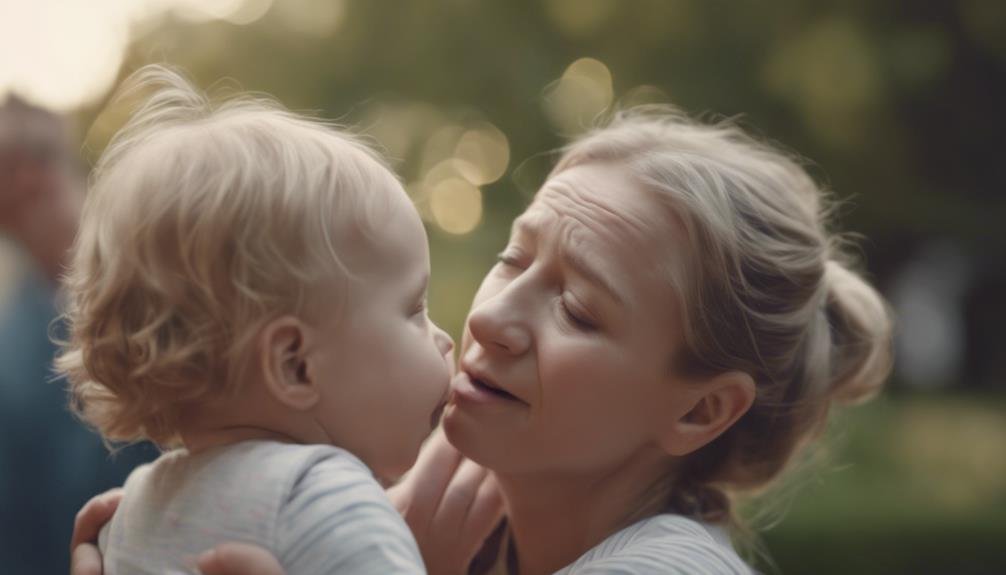
If your toddler's separation anxiety persists and you find yourself needing additional support, turning to caregivers for assistance can provide valuable help and reassurance. Caregivers, whether they're family members, friends, or professionals, can offer the support and understanding you need during this challenging time. Here are some ways they can assist you:
- Sharing Experiences: Caregivers who've dealt with separation anxiety in toddlers before can share their experiences with you, providing insight and comfort knowing that you aren't alone in this journey.
- Offering Respite: Caregivers can give you the opportunity to take a break when you feel overwhelmed. Even a short respite can help you recharge and better support your toddler.
- Providing Emotional Support: Sometimes, just having someone to talk to and lean on can make a significant difference. Caregivers can offer a listening ear, empathy, and encouragement when you need it most.
Staying Patient and Consistent
When dealing with separation anxiety in toddlers, maintaining patience and consistency is key to helping your child navigate this challenging phase. Toddlers thrive on routine and predictability, so staying patient and consistent can provide them with the stability they need during times of separation anxiety. Here are some strategies to help you stay patient and consistent throughout this process:
| Strategies | Description |
|---|---|
| Set a Routine | Establishing a consistent daily routine can help your toddler feel secure and less anxious. |
| Provide Reassurance | Offer words of comfort and physical affection to reassure your child during times of distress. |
| Stay Calm | Remember to stay calm and composed, as your child may mirror your emotions in stressful situations. |
Frequently Asked Questions
How Can I Help My Toddler Cope With Separation Anxiety During Nighttime?
You can help your toddler cope with nighttime separation anxiety by creating a calming bedtime routine, offering reassurance and comfort, using a nightlight, and establishing a consistent sleeping environment. These strategies can provide a sense of security and comfort.
Is It Normal for My Toddler to Show Regression in Potty Training During Separation Anxiety?
It's common for toddlers to display potty training regression during separation anxiety. Remember, it's a temporary phase. Stay patient, provide reassurance, and maintain a consistent routine. Encourage positive reinforcement and praise for small steps forward.
What Are Some Strategies to Ease Separation Anxiety When Dropping off at Daycare?
When dropping off at daycare, it's helpful to establish a consistent routine, offer reassurance, and say a loving goodbye. Engage in a quick goodbye ritual, such as a special handshake or hug, to ease separation anxiety for your child.
Can Separation Anxiety in Toddlers Affect Their Social Interactions With Peers?
Yes, separation anxiety in toddlers can affect their social interactions with peers. When feeling anxious, toddlers may struggle to engage, share, or communicate effectively. Creating a supportive environment and providing reassurance can help them navigate these challenges.
How Can I Handle Separation Anxiety in My Toddler When Transitioning to a New Caregiver?
When transitioning to a new caregiver, reassure your toddler with consistency and patience. Acknowledge their feelings, create a goodbye routine, and provide a comforting object. Slowly build trust and familiarity, like planting seeds for a garden to grow.
Conclusion
As you navigate through your toddler's separation anxiety, remember to be the steady anchor in their stormy seas. By following these effective strategies, you can help them find their footing and build resilience.
Imagine a world where your little one feels secure and confident, ready to embrace new experiences with courage. With understanding, patience, and consistency, you can provide the support they need to thrive and grow.
Stay strong, stay loving, and watch them soar.





